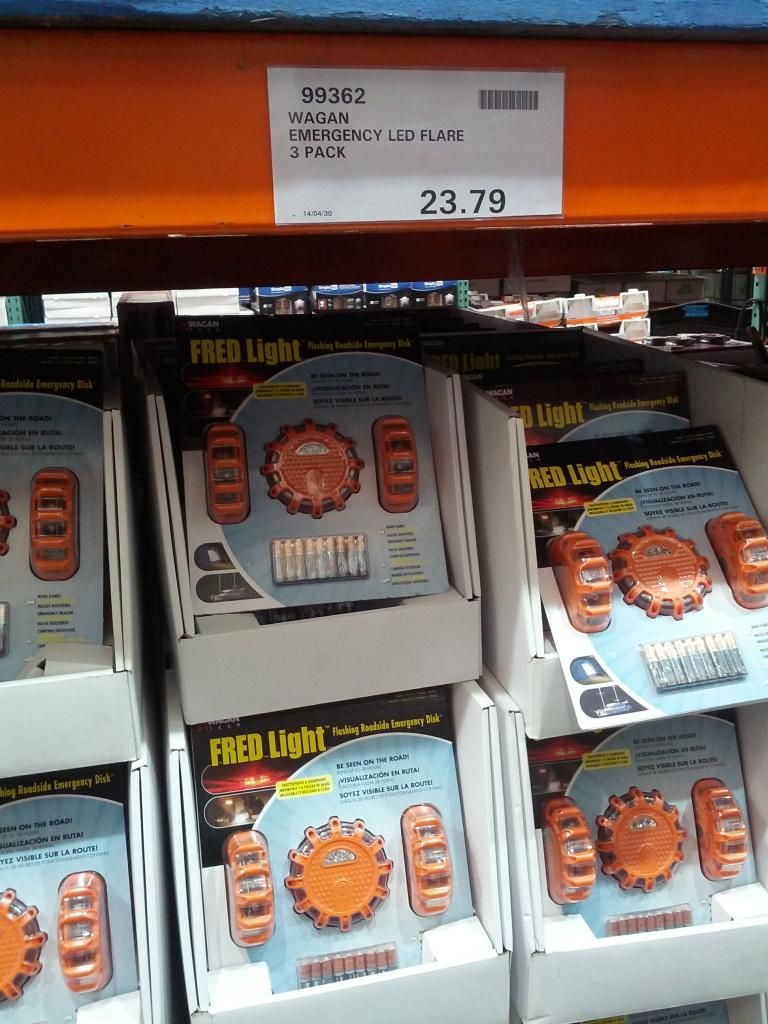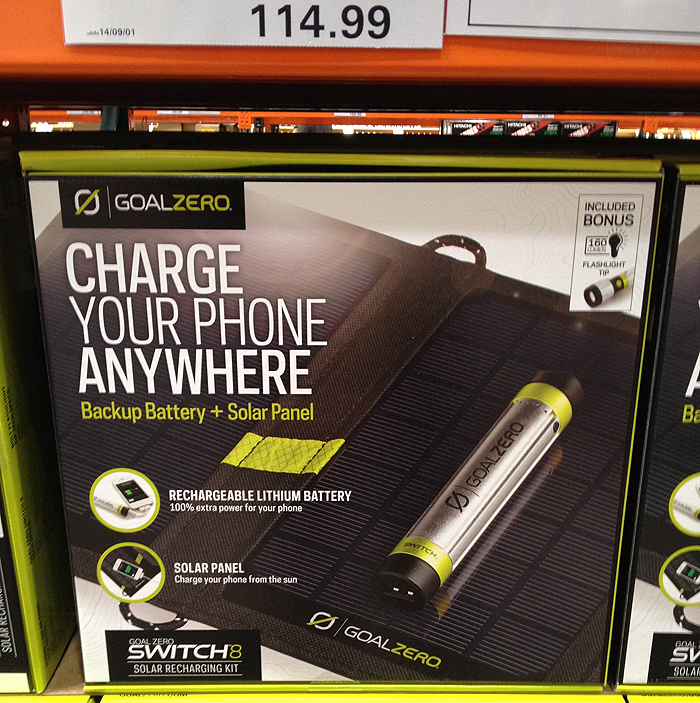Post by SA Hunter on Aug 26, 2014 1:17:26 GMT 10
graywolfsurvival.com/2727/survival-tools-will-need-upcoming-winter/
Survival gear you should have in your car
What should you put in your car or go-bag for winter?
Winter challenges even the best survivalists. Short days, long nights, and an unforgiving cold have the potential to kill the unprepared. Food is scarce, water is frozen, and fires are impossible to build for the inexperienced. To give yourself the best chance at surviving winter, you need to have a survival kit. Here’s what you should keep close if you want to make it through those long nights:
Water
Dehydration can overcome you within hours if you are exerting yourself and don’t have a proper supply of water. As such, your survival kit must have enough water in it that you’ll be able to survive long enough to find a new source. If you don’t have water, you can melt some ice or snow. If you don’t have heat, put the ice or snow into some kind of container and hold it against your body. Your body heat will melt the ice and snow into water, which you can then treat or boil. Never put container directly against your skin, doing so can cause frostbite or a drop in your core temperature (which can lead to hypothermia).
Food
2400 CALORIE EMERGENCY FOOD BAR PACKETS (U.S. Coast Guard Approved)
It takes a lot of energy to maintain your body’s optimum core temperature at 98.6 degrees. This is especially true in cold weather. Think about how much energy it takes to heat your home! Fill your survival kit with non-perishable foods such as protein bars, energy bars, and dehydrated fruit. Remember you are packing your kit to survive, this isn’t a diet, the more calories you have the better off you will be.
Hats, Mittens and Snow Pants
Hypothermia is a real risk in colder climates, as is frost bite. If your hands become frost bitten, you’ll be unable to use them, dramatically lowering your ability for survival. Snow pants and a hat will both help insulate your body and protect you from moisture. You need to be very conscious of how much you are sweating also, it may not seem like a big deal but it is much easier than you might think to sweat in the cold. Most of your clothing will be waterproof in order to keep you from losing heat, but it can also trap all of the moisture inside your clothing, which can lead to a whole new set of problems.
Waterproof Matches or Lighter
On a winter night, fire is life. Not only will it help you ward off any predators, but the heat provided will keep you warm and help you cook any game you manage to catch. Note that if you opt to carry a lighter, you should bring matches just in case, as the butane may leak out over time or the lighting mechanism may freeze in colder climates. Also you will want to have an easy to use method of starting a fire as the cold will take a major toll on the dexterity of your hands… so much so that a normal childproof lighter might seem more like a Rubik’s cube and essentially be useless.
First Aid Kit
A basic first aid kit should contain band aids, gauze, tape, antiseptic wipes, tweezers, scissors, and a variety of bandages. An injury when you’re warm in your home is easy to deal with, but an untreated injury in the wild can lead to infection, or worse. It is also a good idea to keep a few of those instant hot packs in your supply kits. (This will help if you are trying to get a fire going and your fingers are numb like I pointed out above.)
Medicine
Many people have some kind of prescription medicine that they need to take on a daily basis. If you’re one of those people, you need to have extra in your survival kit.
Multi-Tool
Make sure the multi-tool in your survival kit contains a knife, as that is the most frequently used tool in survival situations. Pliers, scissors, and a screwdriver may also come in handy, depending on the situation.
Flashlight with Batteries
There is no darkness like that of a winter’s night with a new moon. A flashlight can be used to find your way through the dark and signal for help – but only if it’s stocked with batteries. LED flashlights last much longer and shine brighter than most normal flashlights you will find.
Emergency Flares
If you’re truly lost and alone, an emergency flare may be your only way of finding help and in a pinch it can be used to get a roaring fire going even if you only have wet tinder to work with.
The winter is brutal even on the most prepared survivalists. Don’t be caught off guard without a well-stocked survival kit.
At Survival Life our mission is to provide vast array of knowledge, tactics, and skills in the survival and preparedness fields, to any and all who wish to become more prepared for whatever may come. We will take a logical and no nonsense approach to survival without bias in hopes of dispelling the myth that anyone who prepares themselves is crazy or paranoid.
Survival gear you should have in your car
What should you put in your car or go-bag for winter?
Winter challenges even the best survivalists. Short days, long nights, and an unforgiving cold have the potential to kill the unprepared. Food is scarce, water is frozen, and fires are impossible to build for the inexperienced. To give yourself the best chance at surviving winter, you need to have a survival kit. Here’s what you should keep close if you want to make it through those long nights:
Water
Dehydration can overcome you within hours if you are exerting yourself and don’t have a proper supply of water. As such, your survival kit must have enough water in it that you’ll be able to survive long enough to find a new source. If you don’t have water, you can melt some ice or snow. If you don’t have heat, put the ice or snow into some kind of container and hold it against your body. Your body heat will melt the ice and snow into water, which you can then treat or boil. Never put container directly against your skin, doing so can cause frostbite or a drop in your core temperature (which can lead to hypothermia).
Food
2400 CALORIE EMERGENCY FOOD BAR PACKETS (U.S. Coast Guard Approved)
It takes a lot of energy to maintain your body’s optimum core temperature at 98.6 degrees. This is especially true in cold weather. Think about how much energy it takes to heat your home! Fill your survival kit with non-perishable foods such as protein bars, energy bars, and dehydrated fruit. Remember you are packing your kit to survive, this isn’t a diet, the more calories you have the better off you will be.
Hats, Mittens and Snow Pants
Hypothermia is a real risk in colder climates, as is frost bite. If your hands become frost bitten, you’ll be unable to use them, dramatically lowering your ability for survival. Snow pants and a hat will both help insulate your body and protect you from moisture. You need to be very conscious of how much you are sweating also, it may not seem like a big deal but it is much easier than you might think to sweat in the cold. Most of your clothing will be waterproof in order to keep you from losing heat, but it can also trap all of the moisture inside your clothing, which can lead to a whole new set of problems.
Waterproof Matches or Lighter
On a winter night, fire is life. Not only will it help you ward off any predators, but the heat provided will keep you warm and help you cook any game you manage to catch. Note that if you opt to carry a lighter, you should bring matches just in case, as the butane may leak out over time or the lighting mechanism may freeze in colder climates. Also you will want to have an easy to use method of starting a fire as the cold will take a major toll on the dexterity of your hands… so much so that a normal childproof lighter might seem more like a Rubik’s cube and essentially be useless.
First Aid Kit
A basic first aid kit should contain band aids, gauze, tape, antiseptic wipes, tweezers, scissors, and a variety of bandages. An injury when you’re warm in your home is easy to deal with, but an untreated injury in the wild can lead to infection, or worse. It is also a good idea to keep a few of those instant hot packs in your supply kits. (This will help if you are trying to get a fire going and your fingers are numb like I pointed out above.)
Medicine
Many people have some kind of prescription medicine that they need to take on a daily basis. If you’re one of those people, you need to have extra in your survival kit.
Multi-Tool
Make sure the multi-tool in your survival kit contains a knife, as that is the most frequently used tool in survival situations. Pliers, scissors, and a screwdriver may also come in handy, depending on the situation.
Flashlight with Batteries
There is no darkness like that of a winter’s night with a new moon. A flashlight can be used to find your way through the dark and signal for help – but only if it’s stocked with batteries. LED flashlights last much longer and shine brighter than most normal flashlights you will find.
Emergency Flares
If you’re truly lost and alone, an emergency flare may be your only way of finding help and in a pinch it can be used to get a roaring fire going even if you only have wet tinder to work with.
The winter is brutal even on the most prepared survivalists. Don’t be caught off guard without a well-stocked survival kit.
At Survival Life our mission is to provide vast array of knowledge, tactics, and skills in the survival and preparedness fields, to any and all who wish to become more prepared for whatever may come. We will take a logical and no nonsense approach to survival without bias in hopes of dispelling the myth that anyone who prepares themselves is crazy or paranoid.



 We have one of the best search and rescue co-ordination centres (AMSA) in the world. 4 minutes notification time to AMSA from activation of EPIRB.
We have one of the best search and rescue co-ordination centres (AMSA) in the world. 4 minutes notification time to AMSA from activation of EPIRB.
